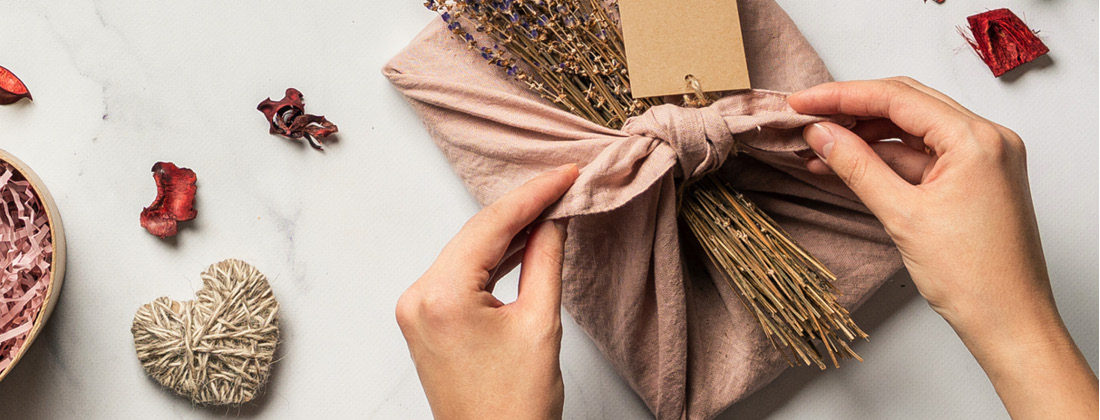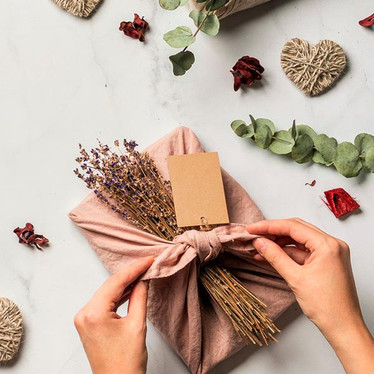
Brianne West, founder and CEO of Ethique shares five easy swaps to reduce single-use plastic this Christmas, so you can celebrate a special, sustainable holiday.
Christmas is a wonderful time of year for many of us; the start of the summer holidays, a day spent with friends or family, enjoying our beautiful outdoors. Unfortunately, it’s a pretty terrible time of year for the planet. Christmas puts consumerism on steroids. Part of it is pressure to look the part and keep up with those around us. Part of it is generosity and wanting to make your friends and family happy with thoughtful gifts and surprises. 15% of all online sales are made in just four days from Black Friday to Cyber Monday. Household waste almost doubles during December, primarily due to wrapping and product packaging from all those pressies.
I can’t find a robust measurement for NZ, but in the pursuit of a perfect Christmas, people in the UK created 103,000 tonnes of plastic waste in 2018. For (somewhat bizarre) context, that is the equivalent of 216,000 polar bears (which is almost 10x more that the number of actual polar bears on the planet).
However, I'm a big believer in the idea that you don't have to give up everything you love in order to tread more lightly on our planet. So how can Christmas still be the wonderous, magical time it is for so many of us, but without the downside for our planet?
Here are five easy swaps and frankly, some things we can do without.
1.Wrapping
This is a given. Wrapping presents is absolutely part of the fun so skipping it isn’t the answer for many of us. Thankfully, sustainable swaps are endless. Do you get the daily newspaper? Or do you have some old plain paper hanging around? You can make plain wraps look beautiful - just ask Pinterest. If you want to go the typical wrapping paper route, this can still be a sustainable option. Just look for options made from recycled paper with no glitter or glossy coating (that’s plastic) as they are often compostable.
Fabric wraps are great and those of you who have seen the Japanese art of Furoshiki will know it is beautiful. This is super sustainable, IF the fabric can then be used as a scarf or something else. Fabric is much more energy, water and waste intensive than paper so it’s not a good solution for single-use. If, on the big day, you receive presents wrapped in glittery or glossy paper, unwrap them slowly (heightens the anticipation) and keep the paper to reuse later. On that note – ditch cards too. I get it, I love receiving cards with notes, it’s really touching. But you can do the same thing with an email or a phone call, without the waste.
2.Childrens toys
I don’t have children, but I do have a multitude of animals so I understand the desire to shower them with as many things as they could ever want (and much more besides). However, those colourful, noisy flavours-of-the-week are usually triple-wrapped in different varieties of plastic (so you can’t recycle it), often cheaply made so they break easily, and kids go off them pretty quick from what I hear. So, try not to load up with them, and perhaps go for one that really is the bee’s knees. Toy libraries are a great option too, if you are lucky enough to live near one. Some companies are making inroads into sustainable options (great work Lego), but as yet there isn’t too much that is sustainable about the toy industry.
3. Oh Christmas tree
There are a few questions about trees, and which is more sustainable: the real tree or the fake one. Unless you use your plastic Christmas tree for 10+ years, the best option for the environment is the real thing. Christmas trees are grown specifically to be Christmas trees. For every one cut down, typically three are planted. Most of a tree’s mass comes from the carbon in our air (in the form of carbon dioxide), so real trees are removing carbon (depending on disposal), rather than creating more like plastic ones. And of course, the big one – real trees are compostable. Plastic trees are forever. If you already have a plastic Christmas tree and reuse it every year for years to come that’s okay – just use it to death. And if you want the best option, buy a Christmas tree in a pot! Then you can enjoy a live tree year after year.
4. Gift experiences – not things
40% of all plastic ever made is product packaging – typically used once and binned. Do you know what is completely packaging free? Experiences! Make your friends tag along with you and do a bungy jump or hike up the Mount over NYE. Not only do you get out and about and spend time with people you love (or at least like), but you get to support NZ tourism operators, who have had an enormously tough year. Another lovely option is something like Oxfam’s Unwrapped gift cards, where you can help send girls to school, or providing food for a family who are otherwise unable to afford it. Beautiful cards and completely plastic free.
5. Christmas decorations
I love hanging up the Christmas decorations that I made when I was a kid. To anyone else, they are misshapen lumps of wood or paper that are supposed to resemble Santa. To me, they are a nostalgic reminder of my childhood. We have kept them for over twenty-five years, so they are certainly past their best. The important takeaway here though is instead of buying packs of incredibly cheap, shiny, colourful baubles each year, reuse what you have. You don’t need a different colour theme every year – use what you have.
This year’s Christmas may look different to many of us with the impact of the ongoing pandemic, so be kind and make thoughtful choices. I hope you get to enjoy some time off in the sun.
Happy Holidays.

